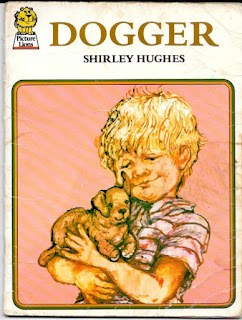I've just arrived back from my second trip to the Bologna Children's Book Fair. I'm totally exhausted but it was a fantastic few days! Pasta, Parmesan, Prosecco, Piazza Majiore, Parma Ham, Pizza and Picture Books! What more could you ask for?
But arriving at the book fair can sometime feel a little overwhelming. Whether your a regular Bologna Book Fair goer or whether it's your very first time, the book fair is HUGE and there is such a lot to see and do. Where do you start? I asked for some top tips from those in the know. Authors, Illustrators, Editors and even our previous Children's Laureate, Chris Riddell, gave me some of their Bologna 'Do's and Don'ts'.
 Benji Davies-Picture book writer and artist.
DO
Benji Davies-Picture book writer and artist.
DO- take some time to explore Bologna itself and not just the fair. It's a beautiful city.
DON'T- feel too overwhelmed by the whole experience-take your time to enjoy it.

Paula Bowles-Illustrator
DO-bring a sketch book. Also bring a sandwich- the queues for the snack bars are long!
DON'T-rush around too much. There's a lot to see. Take your time!

Laura Roberts- Executive Editor, Illustrated Publishing, Bloomsbury
DO-wear comfortable shoes if you're walking around the fair all day!
DON'T - be afraid to talk to people. You never know who or what in children's publishing you might have in common.
Yuval Zommer-Author/Illustrator
DO-at every opportunity, go into the courtyard and sit down with your sketch book. Book lovers are good at posing naturally. There are big portfolios and big crowds! It's great for people-drawing. You are spoilt for choice. It's not always easy to talk to the publishers. It can be hard to get a spot so you need to book ahead- it's much easier to draw people! And if you love books and you love people, well, you can't find a place that's more full of books and people! Also,
DO pay attention on the plane- you can meet Frances Hardinge and she really does wear a hat!
DON'T-Take the early morning flight because once you're here it's absolutely all happening! It's not a quiet place to look around!
Lou Carter- Picture Book Author
DO- consider coming to the fair for 2 days so that it's not so overwhelming. There is a lot to see!
DON'T-forget to check out the weather before you come- it can be quite changeable! (And do remember to bring a coat!)
Ben Mantle-Children's Author and Illustrator
DO-plan ahead. There are lots of good talks and exhibitions at the fair. Another top tip- if you're an illustrator, you can buy an early bird discounted ticket so keep an eye out for that.
DON'T- arrive on the Monday morning. Give yourself a chance to explore and settle in over the weekend.
Jessica Wickham-Events and Marketing
DO- make time to explore the rest of Bologna- it's beautiful!
DON'T- forget to pick up an exhibition map at the entrance so that you fully explore the fair- it's big!
Mark Chambers-Illustrator
DO- try to look at as much as you can and explore all the different areas of the fair.
DON'T - be afraid to go on to a stand and introduce yourself but don't put too much pressure on yourself either- just enjoy the experience.
Penny Morris- Associate Publisher- Macmillan Children's Books
DO- be open to everybody because you never know when an opportunity will come along.
DON'T- stay up too late every night. Keep it to the last night!
Alice McKinley- Children's Illustrator. Alice has just completed her MA at the Cambridge School of Arts.
DO- make sure you bring lots of food and drink to the fair and stay hydrated!
DON'T- get too drunk at the Swine bar!
Greg Gormley-Picture book author
DO- use the toilets near to the entrance- they're less busy than the rest.
DON'T- feel you have to spend the entire day at the fair. It's huge and you'll crash and burn!
Tim Budgen -Children's Book Illustrator
DO- bring your own packed lunch and water, and a big bag to stuff everything in! Also pick up lots of freebies!
DON'T - be too demanding and annoy the people on the front desks of publishing stands- they don't like it! :)
Lucy Rowland- Picture book author
My own thoughts...well, just the one really:
DO- go to Bologna! If you're wondering whether or not it is a worth while trip, I'd say, in my experience, YES it definitely is! It's not all about exposure and formal meetings with publishers but about meeting other creative people who love children's literature and children's illustration as much as you. It's about immersing yourself in the world of children's books. It's about getting inspired, getting ideas, getting to know people (and getting a bit tipsy on Aperol Spritzes!)
And finally, from our previous
Children's Laureate and Author/Illustrator extraodinaire, Chris Riddell (who is shown in the photo christening the Macmillan's illustrator board at their 175th birthday celebrations) comes the following advice:
DO- go with the flow at the Bologna Book Fair
DON'T- over plan!
Have you been to the Bologna Children's Book Fair before? What are your Do's and Don'ts to make the most of the trip?
I was very excited this year to spot my new picture book with illustrator Kate Hindley, which was proudly displayed on the Nosy Crow Stand. 'The Knight Who Said No' is out on 5th April.























































